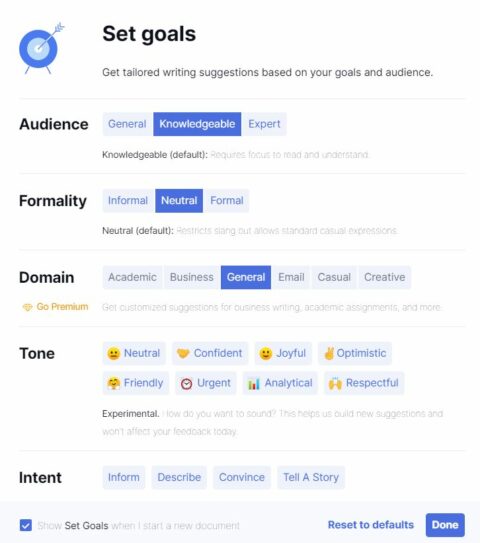If you’re often developing content for your brand or business, a well-thought-out roadmap of content is a must.
Especially if you’d like your content to be a part of your sales funnel.
If you don’t have the right strategy in place, how are you going to be successful in the future?
While that process can be time-consuming, there are other tactics with regards to content development that you can follow which will help you write better quality content, faster.
Here are the 10 secrets you can try now:
Where to Find Blogging Ideas
Are you having trouble with coming up with topics to write about?
Then there are four things that can help you develop topics your customers want to read about.

1. Interview Your Customers
Take some time to reach out to them and find out what information they would like to see on your website.
For example: If you’re a pest control company, seasonal prevention tips on how to keep your house bug-free may be a topic of interest.
Or if you’re in health care: Perhaps a step-by-step guide on finding a specialist within your website could be of value.
While your current customer base has already been converted, using them as a resource will not only help build out your content but potentially help in keeping your customer base.

2. Need Content Ideas? Quora Is Your Answer
Quora is a question and answer platform where questions are asked, answered, and followed by people accessing the website.
It’s a great place to look for what people are asking questions about to help you develop content ideas.
Let’s say your business is in home insurance.
Writing helpful articles around hurricane preparedness may not only help your customers, but it can also help your ranking if you optimize the content using geo-targeting for your location.
For example:
- What should I do to prepare for a hurricane in Tampa, Florida?
- How should I prepare my house for a hurricane in Florida?
- What items should I buy for my hurricane kit?
- What items should I take with me if I have to evacuate for a hurricane in Texas?
3. Consider Frequently Asked Questions (FAQ)
Every website should have an FAQ section.
If yours still doesn’t, creating one will not only help your customers but also help you develop content faster.
How?
Put yourself in your customer’s shoes and then look at your product and service.
What would you want to know about your business?
What problems does your business solve?
The website Zappos.com is a good example. They built their FAQs into sections to help the customer user experience.
Remember, too, that FAQs should be updated regularly. Doing so also helps lead to future content ideas.
4. Optimize Old, Top-Performing Blog Posts
This sounds easy, right?
Well, it’s actually a quick and “dirty” way you can perhaps rank higher for that blog post, and get additional organic traffic to your website.
Look for your top-performing blog posts and add additional insightful information.
Though the content may be evergreen, there may have been additional updates in the industry that can be added to the content.
For example, take the flu season.
If you’re a health care provider, this will always be a topic of relevance to your patients.
While most of the information doesn’t necessarily change, like symptoms and such, vaccine information may change.
Updating the blog with the most current information, and republishing it will likely rank higher in SERPs.
You don’t need to develop a new page, though.
In fact, doing so could hurt you.
Keep the same page and same URL, but mention at the beginning of the blog post that it was recently updated with the new date.
This will provide insight that this content is not only valuable but that you, as an author or publisher, take content on your site seriously and strive to make sure it stays current.
Tools to Make the Blogging Process Easier

Yes, there are tools out there to help you develop content better and faster!
Here are a few of them.
5. Google Search Console
Digging into Google Search Console will help you find keywords in your website that you may not necessarily be developing content around, but should be.
For example: finding pages with a high amount of impressions but lower clicks can be a jumping-off point.
In addition, you can also look at the negative keywords you’re ranking for.
6. Google Autocomplete & Related Searches
Both tools you probably use frequently when you’re searching for a product, service, or answer; but you can also use these tools to help develop your content.
Simply start out with a keyword or a long-tail keyword and see what autocomplete serves up.
These predictors are done by looking into historical data, in addition to popular and similar search terms, other individuals are looking for.
Related terms are other suggestions Google serves up that are related to the original search.
These also provide a deeper insight into what people are looking for.
And as a blogger, it will give you instant ideas for content.

7. Grammarly
If you’re reading this and have never used Grammarly before, you’re in for a treat.
Grammarly is an AI-powered application that helps you communicate your messages more effectively.
More importantly, it helps detect and correct:
- Spelling mistakes.
- Punctuation errors.
- Grammar errors.
- Writing style.
This tool is a huge time-saver if you need to develop content fast and on a regular basis.
There’s also a really cool feature within the application that lets you set goals by audience, formality, domain, tone, and intent.
This keeps your work in line when creating the appropriate type of content for their respective audiences.

8. BuzzSumo & SEMrush
You need tools to help you write faster, and these are two of the top ones to consider.
BuzzSumo is very helpful with content strategy development as it lets you perform outreach and competitive research on topics that are popular within your industry.
You can also see which content is getting the most shares – a great indication of what content you should be building on – as it already resonates with the public.
This insight can help you create an editorial calendar around popular subjects.
SEMrush has loads of features.
Quite frankly, a blog on SEMrush for writing content better and faster could be a topic in itself, but I want to highlight their Topic Research Tool now.
It suggests content ideas based on related topics, trends, and keywords you’re focusing on.
It also shows what questions people are asking about the said topic to help you speed up the process of idea generation.
While both are paid tools, there are free trials available.
But if you’re in any content marketing role within any industry, you definitely need to invest in them.
Develop Good Writing Habits
9. Keep It Conversational
It may sound obvious, but writing in a conversational way may be a way to develop content faster.
Also, use contractions (e.g., you’re), and be considerate of spacing out your content so it’s easy to read.
Want to avoid people bouncing from your content?
Then get straight to the point.
This will also not only help you create content faster, but your readers will also appreciate it!
10. Outline First, Write Second
Finally, this last tip is simple and obvious, and something I always do.
I never start out with writing the blog. I can’t just dive into it.
Once I have my topic and prior to research, I quickly write notes down about what I want to convey.
I also jot down questions that I want to answer and list the ways I can educate the reader.
My outline contains phrases and articles that I have found, as well as the visuals I want to use.
Adding visuals in your content keeps people engaged.
I will often open up iStock and type in keywords and phrases to see what pops up.
Doing this can also give me ideas on what should be included in the piece I am writing.
Once all your research and brainstorming is done, then it’s time to lay it out.
I typically will write as much as I can in one sitting (2 hours) then walk away.
Later (sometimes the next day), I revisit it. I do this to prevent writing fatigue and, usually, this will give you a better result.
Lastly, keep in mind that it is important to plan and be cognizant of your deadline so you’re able to get the best product.
More Resources:
- Content Marketing: The Ultimate Beginner’s Guide to What Works
- Content Ideation: 12 Awesome Tools to Use
- 17 Tactics to Create Engaging & SEO-Friendly Content
Image Credits
Featured Image: Canva / Modified by author, September 2020
In-Post Images: Canva
All screenshots taken by author, September 2020




